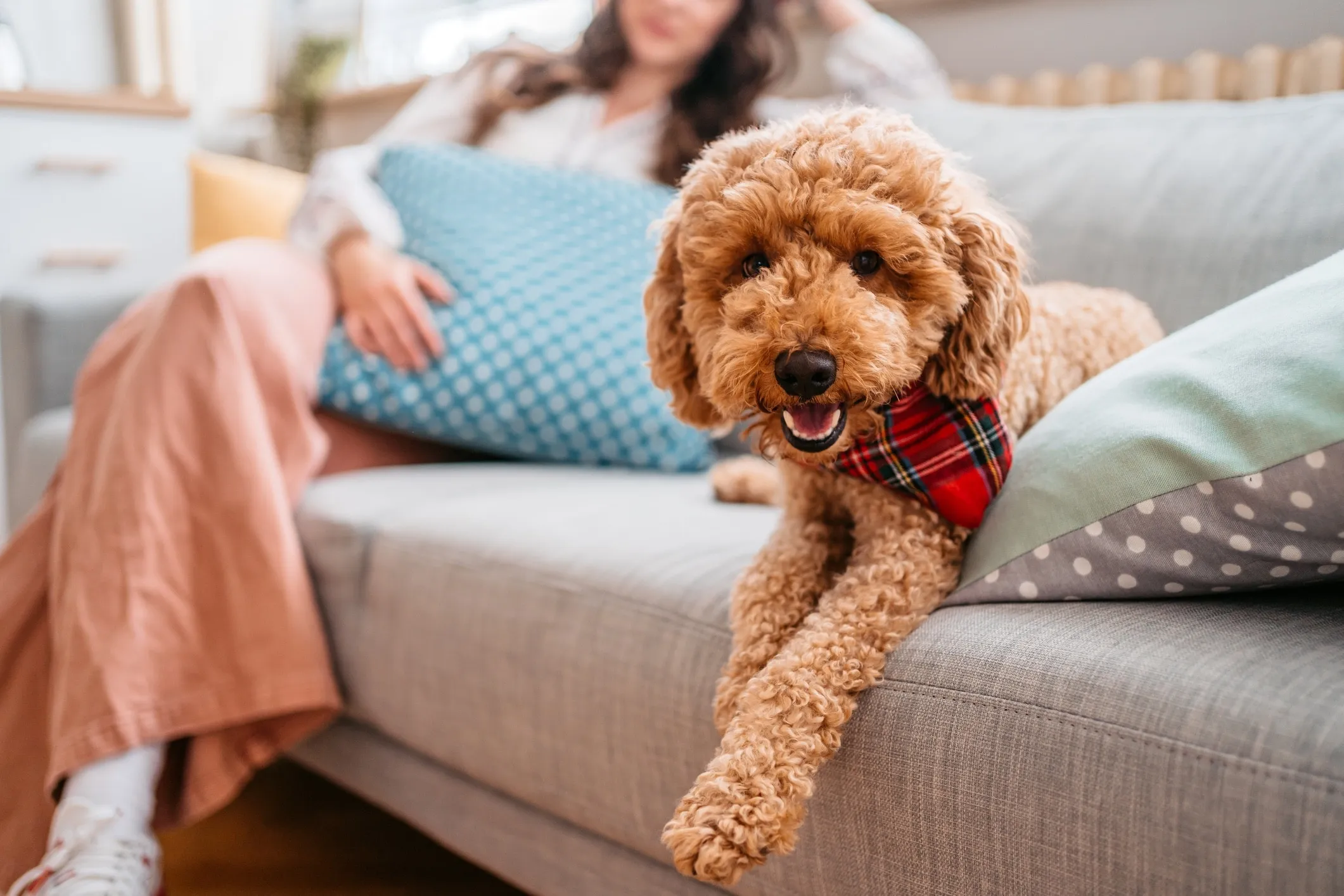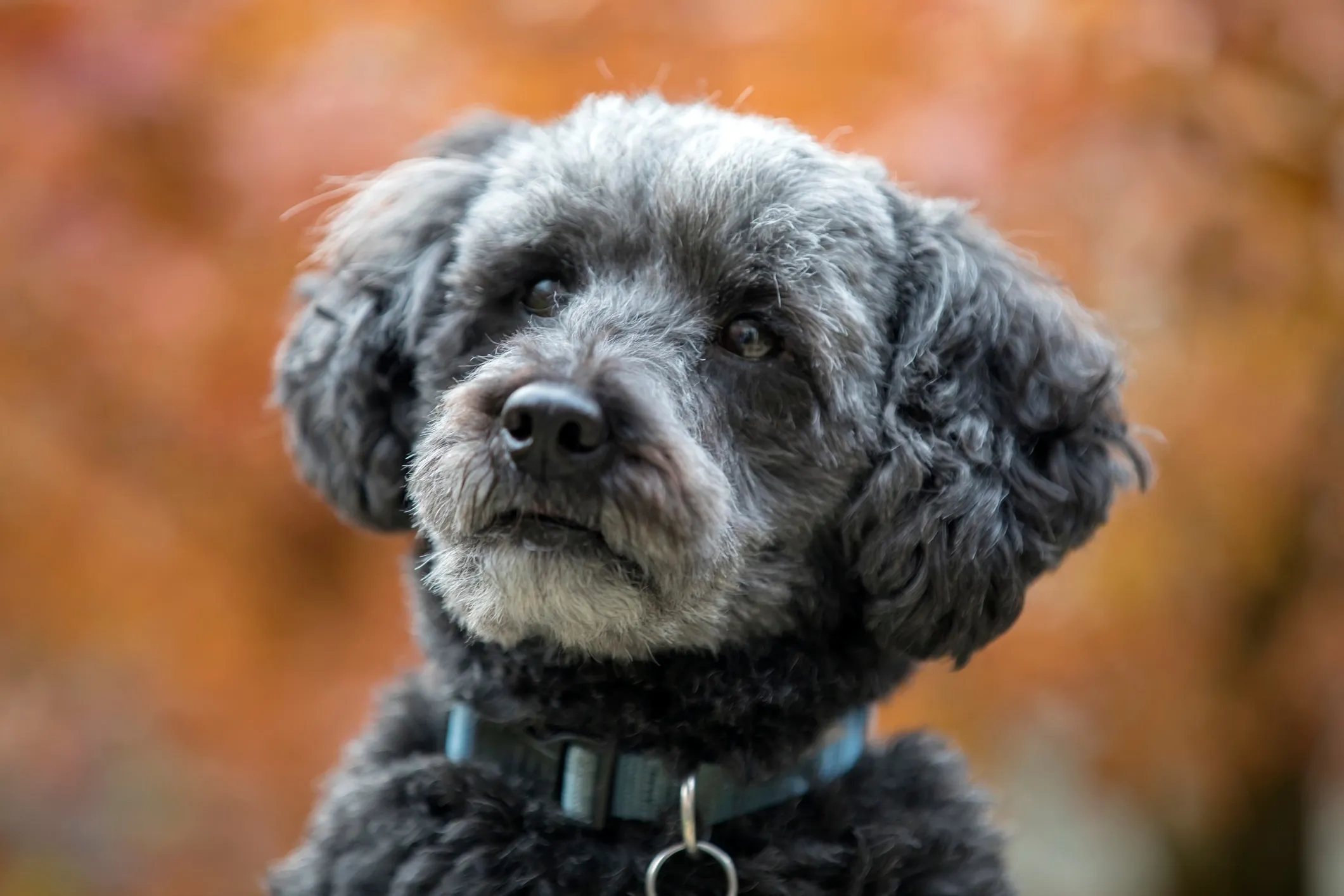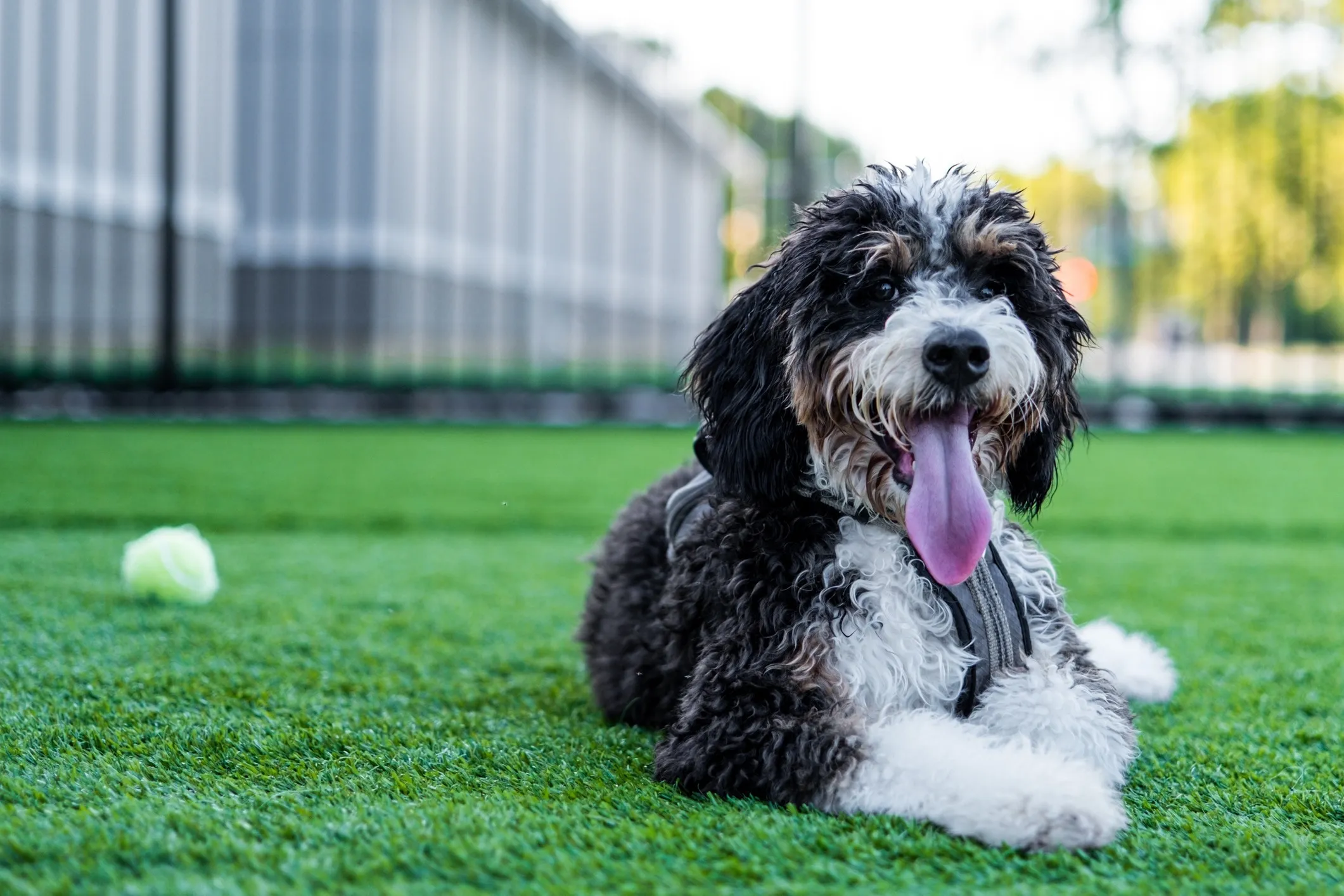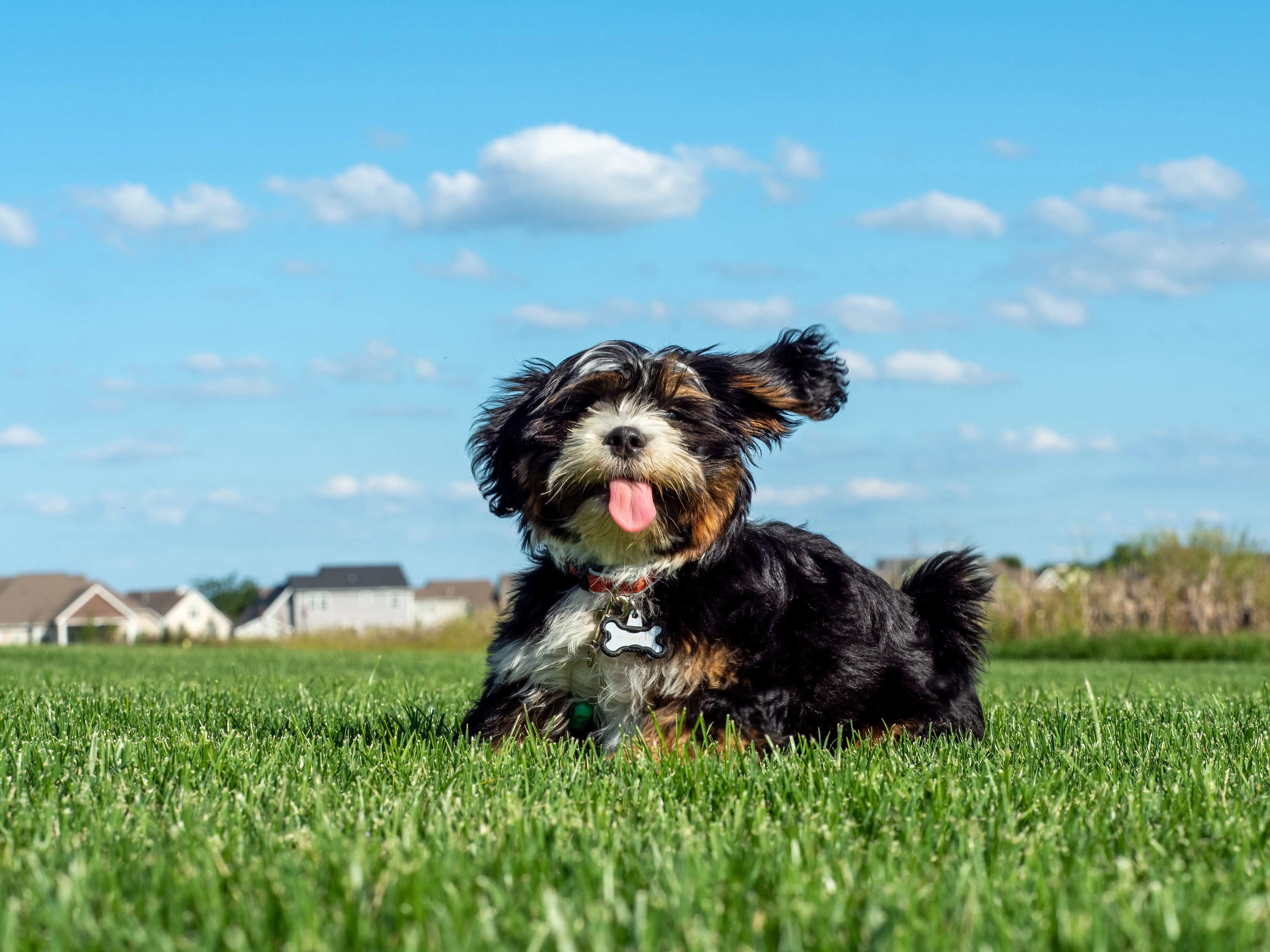For many, the idea of owning a dog brings immense joy, but for those with allergies, it can also bring a sense of trepidation. Pet allergies, often triggered by dander (shed skin cells), can make sharing a home with a furry friend a challenge. This common dilemma has led to a growing interest in dogs that don’t shed much, and increasingly, in “hypoallergenic” crossbreed dogs. These unique mixes are often specifically bred to inherit low-shedding traits from their parent breeds, offering a potential solution for individuals who react to pet dander.
While it’s important to understand that no dog is truly 100% allergen-free, certain crossbreeds produce significantly less dander and shed minimal hair, making them a much more manageable option for allergy sufferers. Our goal at Dog Care Story is to help you navigate this exciting world, providing in-depth insights into some of the most popular and promising cross breed dogs that don’t shed, helping you find a loving companion without the constant worry of allergic reactions.
Understanding Hypoallergenic Traits in Crossbreed Dogs
The term “hypoallergenic” is often misunderstood. It doesn’t mean “non-allergenic” but rather “less allergenic.” All dogs produce allergens in their skin, saliva, and urine, not just their fur. However, the amount of dander (dead skin cells) and shed hair can significantly impact how allergens are distributed in an environment. Dogs with low-shedding coats tend to trap dander within their fur, releasing less into the air and onto furniture, which can dramatically reduce allergic responses for sensitive individuals.
Crossbreed dogs, often referred to as “designer breeds,” gain their “hypoallergenic” reputation by being bred from one or more purebred dogs known for their low-shedding qualities. The Poodle, with its iconic curly coat, is perhaps the most famous example of a low-shedding purebred, and consequently, a common parent in many popular non-shedding crossbreeds. The genetic combination aims to produce offspring that inherit the Poodle’s (or other low-shedding breed’s) coat type, resulting in a dog that sheds minimally. However, genetics can be unpredictable, and even within the same litter of crossbreeds, shedding levels can vary. Therefore, understanding the parent breeds is crucial when considering a non-shedding crossbreed. You can explore more about dogs who don’t shed a lot to understand the general characteristics that contribute to this trait.
Popular Crossbreed Dogs That Don’t Shed
The world of crossbreed dogs is vast and vibrant, but some mixes consistently stand out for their low-shedding coats and delightful temperaments. These breeds offer a wonderful blend of traits from their parentage, often making them ideal companions for families and individuals alike.
The Poodle: The Foundation for Many Non-Shedding Crossbreeds
 A majestic white Poodle, a key parent breed for many cross breed dogs that don't shed, walking gracefully through green grass.
A majestic white Poodle, a key parent breed for many cross breed dogs that don't shed, walking gracefully through green grass.
While technically a purebred, the Poodle’s influence on the “non-shedding crossbreed” world cannot be overstated. Poodles come in three sizes—Standard, Miniature, and Toy—each known for its remarkable intelligence, trainability, and, most importantly for allergy sufferers, its low-shedding, curly coat. This unique coat traps dander and loose hairs, preventing them from scattering throughout the home. Regular grooming is essential for Poodles to prevent matting, whether you brush them daily at home or visit a professional groomer. Their friendly nature and high intelligence make them excellent companions, and these desirable traits are often passed down to their crossbreed offspring.
Labradoodle: The Friendly, Low-Shedding Companion
The Labradoodle is one of the most well-known cross breed dogs that don’t shed, a delightful mix of the intelligent Poodle and the famously friendly Labrador Retriever. This breed was originally developed in Australia as a hypoallergenic guide dog, combining the Poodle’s low-shedding coat with the Labrador’s gentle and trainable nature. Labradoodles are highly intelligent, eager to please, and generally have a friendly disposition, making them excellent family pets. Their coats can vary from wavy to curly, and while most shed minimally, some may shed more depending on which parent’s genetics are more dominant. Regular grooming, including brushing several times a week, is crucial to prevent mats and tangles in their luscious coats. These dogs are active and require regular exercise and mental stimulation to thrive.
Goldendoodle: The Affectionate Golden Blend
 A beautiful Goldendoodle, a popular cross breed dog that doesn't shed, lying comfortably on a couch with a person in the background.
A beautiful Goldendoodle, a popular cross breed dog that doesn't shed, lying comfortably on a couch with a person in the background.
Another beloved “doodle” breed, the Goldendoodle is a cross between a Golden Retriever and a Poodle. Like the Labradoodle, they are celebrated for their affectionate nature, intelligence, and low-shedding coats. Goldendoodles inherit the Golden Retriever’s loyalty and eagerness to please, blended with the Poodle’s cleverness. This combination results in a highly trainable and sociable dog that excels as a family pet. Their coat textures can range from wavy to curly, and colors vary widely, though many retain the “golden” hue of their Retriever parent. Goldendoodles require frequent grooming with a slicker brush to prevent matting, especially in longer coats. They are energetic and benefit from daily walks, playtime, and mental challenges to keep them happy and well-behaved. For families seeking a loving and low-shedding companion, Goldendoodles are often considered among good family dogs that don’t shed.
Aussiedoodle: The Energetic and Intelligent Hybrid
The Aussiedoodle is an energetic and smart cross between an Australian Shepherd and a Poodle. Both parent breeds are highly intelligent and active, so it’s no surprise that Aussiedoodles are known for their sharp minds and high energy levels. Their coats are typically wavy or curly, offering a low-shedding option for active individuals or families. Aussiedoodles thrive on plenty of exercise and mental stimulation; if bored, they can become destructive. Activities like agility training, fetch, and puzzle toys are excellent ways to channel their intelligence and energy. They form strong bonds with their families and are generally good with children and other pets when properly socialized from a young age.
Schnoodle: A Double Dose of Low-Shedding Charm
 A charming gray Schnoodle, a cross breed dog that doesn't shed much, captured in a close-up shot.
A charming gray Schnoodle, a cross breed dog that doesn't shed much, captured in a close-up shot.
The Schnoodle is a unique crossbreed, combining two already low-shedding breeds: the Schnauzer and the Poodle. This makes them an excellent choice for allergy sufferers, as they have a double chance of inheriting a non-shedding coat. Their coats can vary from wiry (like a Schnauzer) to curly (like a Poodle), or a mix of both, but they are consistently low-shedding. Schnoodles are known for their playful, affectionate, and intelligent personalities. They are typically good-natured and can adapt well to various living situations, from apartments to larger homes, as long as they receive consistent exercise and attention. Regular grooming is necessary to maintain their coat, regardless of its texture.
Whoodle: The Wheaten and Poodle Mix
The Whoodle is a delightful cross between a Soft-Coated Wheaten Terrier and a Poodle. This blend results in a friendly, intelligent, and highly affectionate dog with a characteristically soft, wavy to curly coat that sheds minimally. Whoodles are known for their “Wheaten greetin'” – an enthusiastic jump and lick when greeting their favorite people. They inherit the intelligence and eager-to-please nature from both parents, making them relatively easy to train. Whoodles are energetic dogs that require daily exercise and engagement to prevent boredom. Their loving nature makes them wonderful companions for families, provided they receive proper socialization and consistent training.
Bernedoodle: The Gentle Giant Crossbreed
 A large Bernedoodle dog, a gentle cross breed known for not shedding much, resting in the grass with its tongue playfully out.
A large Bernedoodle dog, a gentle cross breed known for not shedding much, resting in the grass with its tongue playfully out.
For those looking for a larger companion among cross breed dogs that don’t shed, the Bernedoodle is an outstanding option. This breed is a mix of the majestic Bernese Mountain Dog and the intelligent Poodle. Bernedoodles are known for their gentle, affectionate, and loyal nature, making them excellent family dogs, especially with children and other pets. Their coats can be wavy or curly, and while they are generally low-shedding, the degree can vary. Regular grooming is essential to keep their thick coats free of mats. Due to their Bernese heritage, they can be quite large, often falling into the medium to large sized dogs that don’t shed category. Bernedoodles are moderately active and require regular exercise to maintain their physical and mental well-being.
Shorkie: The Spunky Shih Tzu & Yorkie Mix
 A charming tan and black Shorkie, a small cross breed dog that doesn't shed, sitting on a hiking trail.
A charming tan and black Shorkie, a small cross breed dog that doesn't shed, sitting on a hiking trail.
The Shorkie is a compact and lively crossbreed, blending the charming Shih Tzu with the spirited Yorkshire Terrier. Both parent breeds are known for their low-shedding coats, making the Shorkie a promising choice for allergy sufferers seeking a small dog. Shorkies are typically affectionate, playful, and full of personality. They adapt well to various living situations, including apartments, as long as they receive adequate attention and daily exercise. Despite their small size, they are confident and can be quite vocal. Their long, silky coats require consistent daily brushing to prevent tangles and matting, along with regular professional grooming.
Shih-Poo: The Compact and Adaptable Companion
A delightful mix of the Shih Tzu and a Toy or Miniature Poodle, the Shih-Poo combines the best traits of both parent breeds. These small cross breed dogs that don’t shed are known for their sweet, playful, and affectionate temperaments. Their coats are typically wavy or curly and require daily brushing to keep them in good condition and prevent matting. Shih-Poos are highly adaptable and can thrive in almost any living situation, from bustling city apartments to quiet suburban homes, as long as they receive consistent companionship and a moderate amount of daily exercise (around 30 minutes). They are generally easy to train and make wonderful lap dogs and family companions.
Malshi: The Affectionate Maltese & Shih Tzu Blend
 A delightful tricolor Malshi dog, a small cross breed known for its low shedding, enjoying time in green grass.
A delightful tricolor Malshi dog, a small cross breed known for its low shedding, enjoying time in green grass.
The Malshi is a charming cross between the Maltese and the Shih Tzu, two breeds both recognized for their luxurious, low-shedding coats. This hybrid results in a small, affectionate, and cheerful companion dog. Malshis thrive on human companionship and are known for their loving and loyal nature. They are excellent lap dogs and enjoy being close to their families. Their long, silky coats require daily brushing to prevent tangles and matting, and many owners opt for a shorter “puppy cut” to simplify grooming. Malshis are relatively low-energy and are well-suited for apartment living, making them an ideal choice for those seeking a small, devoted, and low-shedding friend.
Essential Tips for Living with a Low-Shedding Crossbreed
While selecting a cross breed dog that doesn’t shed is a significant step towards managing pet allergies, living successfully with such a dog requires ongoing commitment to specific care routines. Adopting these practices will help minimize allergens in your home and ensure a harmonious environment for both you and your furry companion.
Consistent Grooming is Key
Even low-shedding crossbreeds require dedicated grooming. Their coats, whether wavy or curly, are prone to matting and tangling if not regularly maintained. Consistent grooming not only keeps their coat healthy but also helps to trap dander and loose hairs, preventing them from becoming airborne.
- Brushing: Daily brushing with a slicker brush or pin brush is often recommended for many of these breeds. This removes loose hair and dander before it can spread.
- Bathing: Regular bathing every 4-6 weeks with a gentle, hypoallergenic shampoo can significantly reduce allergens on their skin and coat. Products specifically designed to reduce dander can also be beneficial.
- Professional Grooming: Many crossbreeds require professional trimming every 6-8 weeks to keep their coats at a manageable length and prevent matting. Factor these costs into your budget, or learn how to groom your dog at home. Hand-stripping, a technique used for some terrier-type coats, removes dead hair by the root and also helps reduce shedding and dander.
Maintaining a Clean Home Environment
Minimizing allergens in your home extends beyond just grooming your dog. A clean living space is crucial for allergy management.
- Vacuum Regularly: Use a vacuum cleaner with a HEPA filter to effectively trap pet dander from carpets, rugs, and upholstery.
- Dust Frequently: Dust surfaces regularly with a damp cloth to capture airborne allergens that have settled.
- Wash Bedding: Wash your pet’s bedding and your own bedding frequently in hot water to remove dander.
- Air Purification: Consider using air purifiers with HEPA filters in main living areas and bedrooms to help remove airborne allergens.
- Ventilation: Keep your home well-ventilated by opening windows when possible or using an HVAC system with a good quality filter.
- Designated Dog Zones: If possible, limit your dog’s access to certain areas, such as bedrooms, to create allergen-free zones.
Consulting Your Healthcare Provider
Managing your personal allergies in conjunction with owning a low-shedding crossbreed is paramount. The best strategy always involves consulting your healthcare provider or an allergist. They can help you understand your specific allergy triggers and recommend appropriate treatment plans.
- Medication: Antihistamines, nasal sprays, and eye drops can help manage symptoms.
- Immunotherapy: Allergy shots (immunotherapy) can gradually desensitize you to pet allergens over time.
- Avoid Contact: Even with low-shedding dogs, it’s wise to avoid direct contact with their saliva (e.g., letting them lick your face) and urine, as these also contain allergens. Wash your hands thoroughly after petting your dog.
Understanding Individual Differences
It’s crucial to remember that despite being bred for low-shedding traits, each crossbreed dog is an individual. There can be variations in coat type and shedding levels even within the same litter. Before bringing a crossbreed home, spend time with the specific puppy or adult dog you are considering to gauge your allergic reaction. Visit them multiple times if possible, and interact directly to see how your body reacts. This “test drive” can save you from unforeseen challenges and ensure a happy, healthy future for both you and your new companion. You may also find our article on the top 10 dog breeds that don’t shed useful for further comparisons.
Conclusion
Choosing a cross breed dog that doesn’t shed offers a fantastic opportunity for allergy sufferers to experience the profound joy and companionship that only a dog can bring. Breeds like the Labradoodle, Goldendoodle, and Bernedoodle, among others, combine desirable temperaments with low-shedding coats, making them ideal family members. However, it’s vital to approach dog ownership with realistic expectations, understanding that “hypoallergenic” means “less allergenic” and requires a proactive approach to grooming and home cleanliness.
By investing in consistent grooming, maintaining a clean living environment, and working with your healthcare provider to manage personal allergies, you can create a loving and comfortable home for both yourself and your furry friend. The effort is undoubtedly worthwhile for the unconditional love and happiness these special crossbreeds bring into our lives. Explore more valuable insights and care guides on Dog Care Story to ensure your pet lives its best life!
WRITTEN BY
Nicole Zittritsch, LVT, BSc, MPH
